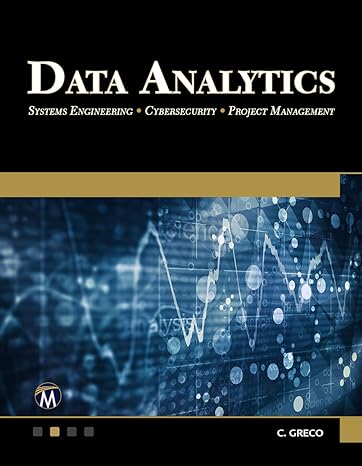

In order to prepare for problems where error has been introduced, lets start by solving a problem without any error in the data. Given the following uncorrupted data -12 -11 our first task is to come up with an algorithm that will recover the original four number signal, which in this case is: CONS You may assume the original signal consists of four non-negative integers less than 10 for all parts of this Lab. Strategy for Part A Now that we have the problem, we need a strategy to solve the problem. Since there is no error, by selectively using the equations, you could solve the problem by hand, but don't do this. We need a strategy that can be easily adapted to handle error when we have it. The approach we will use is quite simple: Make a guess at a random set of integers for the original signal, calculate the result and then check to see if it is right, repeat this process until a solution is found. MG_ECC_Lab.pdf ^ pdf (1).pdf - 1.4.1.pdf - 3.4.2.pdf - 1.4.3.pdf Show all X Canceled - PM 9:09 PM 1 P E 2/4/2020 Pseudo-Code for Part A Pseudo-Code is the detailed steps you give a computer in order to complete a task, but written in a format that is natural for you rather than in any programming language. It allows us to separate how to solve a problem (usually the hardest part) from how to tell MATLAB to solve the problem (the easy part if you have the pseudo-code already written). To write pseudo-code, we need to think through carefully each and every step that the computer must perform. As this is the first problem of the first lab, the pseudo-code is provided below as an example of psuedo-code: Define a vector ES with the eight given data values. Loop over the bracketed lines until a solution is found Create a random four length signal of non-negative integers Calculate the resulting eight length data using the formulas above Check to see if all eight values in the calculated eight length data match exactly the data stored in ES If it is we have found a solution) put the correct four length signal in X exit the loop If it is not Notice that the bracket and indents are used to show dependence and group lines of code in this pseudo-code. You can use some other notation if you prefer. MATLAB code Translate the pseudo-code into MATLAB's programming language (lookup the MATLAB functions and operators at the top of the LAB Project in MATLAB's help to see what you need to use where). Be sure to test your code on the eight values given above. If you do not code your solution according the psuedo-code above, you will make the other parts of this lab much harder. MATLAB's Grader Submit your code to MATLAB's Grader for Part A to check/grade your work. In order to prepare for problems where error has been introduced, lets start by solving a problem without any error in the data. Given the following uncorrupted data -12 -11 our first task is to come up with an algorithm that will recover the original four number signal, which in this case is: CONS You may assume the original signal consists of four non-negative integers less than 10 for all parts of this Lab. Strategy for Part A Now that we have the problem, we need a strategy to solve the problem. Since there is no error, by selectively using the equations, you could solve the problem by hand, but don't do this. We need a strategy that can be easily adapted to handle error when we have it. The approach we will use is quite simple: Make a guess at a random set of integers for the original signal, calculate the result and then check to see if it is right, repeat this process until a solution is found. MG_ECC_Lab.pdf ^ pdf (1).pdf - 1.4.1.pdf - 3.4.2.pdf - 1.4.3.pdf Show all X Canceled - PM 9:09 PM 1 P E 2/4/2020 Pseudo-Code for Part A Pseudo-Code is the detailed steps you give a computer in order to complete a task, but written in a format that is natural for you rather than in any programming language. It allows us to separate how to solve a problem (usually the hardest part) from how to tell MATLAB to solve the problem (the easy part if you have the pseudo-code already written). To write pseudo-code, we need to think through carefully each and every step that the computer must perform. As this is the first problem of the first lab, the pseudo-code is provided below as an example of psuedo-code: Define a vector ES with the eight given data values. Loop over the bracketed lines until a solution is found Create a random four length signal of non-negative integers Calculate the resulting eight length data using the formulas above Check to see if all eight values in the calculated eight length data match exactly the data stored in ES If it is we have found a solution) put the correct four length signal in X exit the loop If it is not Notice that the bracket and indents are used to show dependence and group lines of code in this pseudo-code. You can use some other notation if you prefer. MATLAB code Translate the pseudo-code into MATLAB's programming language (lookup the MATLAB functions and operators at the top of the LAB Project in MATLAB's help to see what you need to use where). Be sure to test your code on the eight values given above. If you do not code your solution according the psuedo-code above, you will make the other parts of this lab much harder. MATLAB's Grader Submit your code to MATLAB's Grader for Part A to check/grade your work








